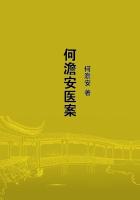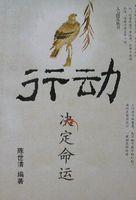None of the early Ferns show any clear approach to other classes of Vascular Cryptogams; so far as the fossil record affords any evidence, Ferns have always been plants with relatively large and usually compound leaves. There is no indication of their derivation from a microphyllous ancestry, though, as we shall see, there is some slight evidence for the converse hypothesis. Whatever the origin of the Ferns may have been it is hidden in the older rocks.
It has, however, been held that certain other Cryptogamic phyla had a common origin with the Ferns. The Equisetales are at present a well-defined group; even in the rich Palaeozoic floras the habit, anatomy and reproductive characters usually render the members of this class unmistakable, in spite of the great development and stature which they then attained. It is interesting, however, to find that in the oldest known representatives of the Equisetales the leaves were highly developed and dichotomously divided, thus differing greatly from the mere scale-leaves of the recent Horsetails, or even from the simple linear leaves of the later Calamites. The early members of the class, in their forked leaves, and in anatomical characters, show an approximation to the Sphenophyllales, which are chiefly represented by the large genus Sphenophyllum, ranging through the Palaeozoic from the Middle Devonian onwards. These were plants with rather slender, ribbed stems, bearing whorls of wedge-shaped or deeply forked leaves, six being the typical number in each whorl. From their weak habit it has been conjectured, with much probability, that they may have been climbing plants, like the scrambling Bedstraws of our hedgerows. The anatomy of the stem is simple and root-like; the cones are remarkable for the fact that each scale or sporophyll is a double structure, consisting of a lower, usually sterile lobe and one or more upper lobes bearing the sporangia; in one species both parts of the sporophyll were fertile.
Sphenophyllum was evidently much specialised; the only other known genus is based on an isolated cone, Cheirostrobus, of Lower Carboniferous age, with an extraordinarily complex structure. In this genus especially, but also in the entire group, there is an evident relation to the Equisetales; hence it is of great interest that Nathorst has described, from the Devonian of Bear Island in the Arctic regions, a new genus Pseudobornia, consisting of large plants, remarkable for their highly compound leaves which, when found detached, were taken for the fronds of a Fern. The whorled arrangement of the leaves, and the habit of the plant, suggest affinities either with the Equisetales or the Sphenophyllales; Nathorst makes the genus the type of a new class, the Pseudoborniales. (A.G. Nathorst, "Zur Oberdevonischen Flora der Baren-Insel", "Kongl. Svenska Vetenskaps-Akademiens Handlingar" Bd. 36, No. 3, Stockholm, 1902.)The available data, though still very fragmentary, certainly suggest that both Equisetales and Sphenophyllales may have sprung from a common stock having certain fern-like characters. On the other hand the Sphenophylls, and especially the peculiar genus Cheirostrobus, have in their anatomy a good deal in common with the Lycopods, and of late years they have been regarded as the derivatives of a stock common to that class and the Equisetales. At any rate the characters of the Sphenophyllales and of the new group Pseudoborniales suggest the existence, at a very early period, of a synthetic race of plants, combining the characters of various phyla of the Vascular Cryptogams. It may further be mentioned that the Psilotaceae, an isolated epiphytic family hitherto referred to the Lycopods, have been regarded by several recent authors as the last survivors of the Sphenophyllales, which they resemble both in their anatomy and in the position of their sporangia.
The Lycopods, so far as their early history is known, are remarkable rather for their high development in Palaeozoic times than for any indications of a more primitive ancestry. In the recent Flora, two of the four living genera (Excluding Psilotaceae.) (Selaginella and Isoetes) have spores of two kinds, while the other two (Lycopodium and Phylloglossum) are homosporous. Curiously enough, no certain instance of a homosporous Palaeozoic Lycopod has yet been discovered, though well-preserved fructifications are numerous. Wherever the facts have been definitely ascertained, we find two kinds of spore, differentiated quite as sharply as in any living members of the group. Some of the Palaeozoic Lycopods, in fact, went further, and produced bodies of the nature of seeds, some of which were actually regarded, for many years, as the seeds of Gymnosperms.
This specially advanced form of fructification goes back at least as far as the Lower Carboniferous, while the oldest known genus of Lycopods, Bothrodendron, which is found in the Devonian, though not seed-bearing, was typically heterosporous, if we may judge from the Coal-measure species. No doubt homosporous Lycopods existed, but the great prevalence of the higher mode of reproduction in days which to us appear ancient, shows how long a course of evolution must have already been passed through before the oldest known members of the group came into being. The other characters of the Palaeozoic Lycopods tell the same tale; most of them attained the stature of trees, with a corresponding elaboration of anatomical structure, and even the herbaceous forms show no special simplicity. It appears from recent work that herbaceous Lycopods, indistinguishable from our recent Selaginellas, already existed in the time of the Coal-measures, while one herbaceous form (Miadesmia) is known to have borne seeds.















